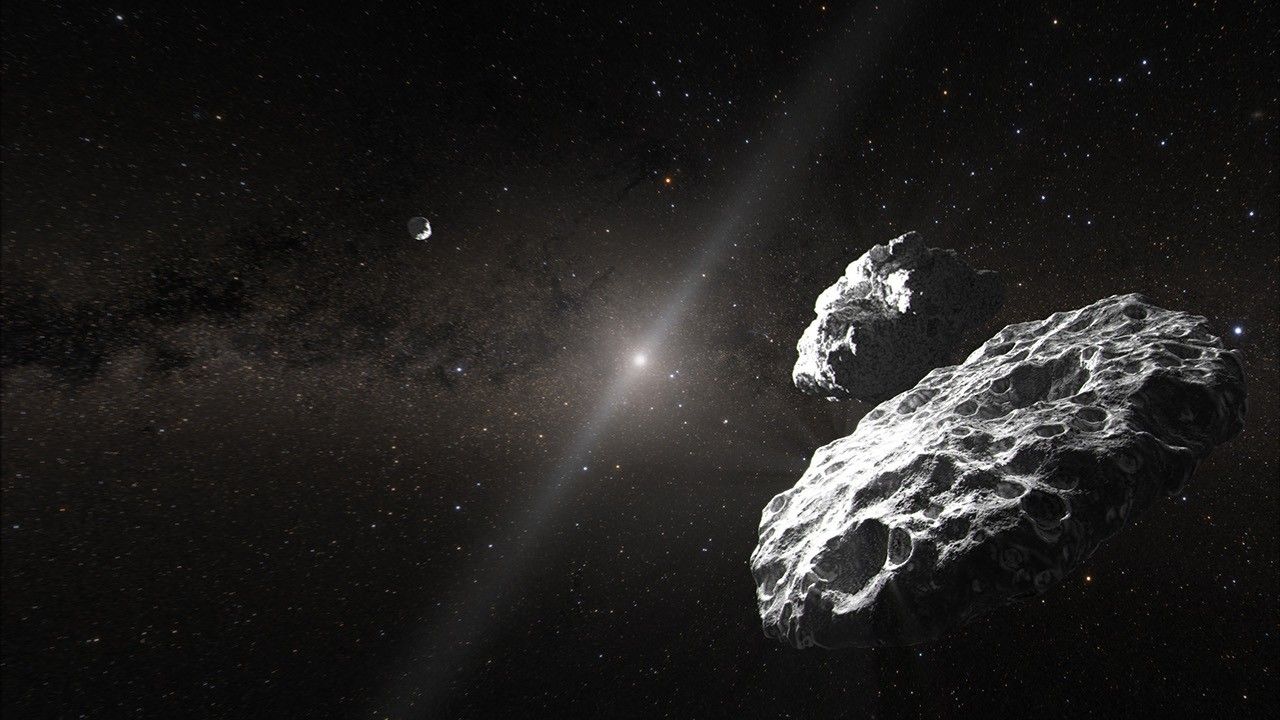Just three weeks before the first expedition crew took up residence aboard the International Space Station (ISS), assembly of the orbiting facility resumed during the STS-92 space shuttle mission. In contrast to STS-106, the previous flight to the station that focused on resupplying and outfitting the station’s interior, the main tasks of STS-92 included external assembly and preparation for future expansion of the orbital facility. During the 13-day mission, the STS-92 astronauts installed two elements to the growing space station and completed four spacewalks to help accomplish those tasks. This was the last flight to visit an uninhabited station.
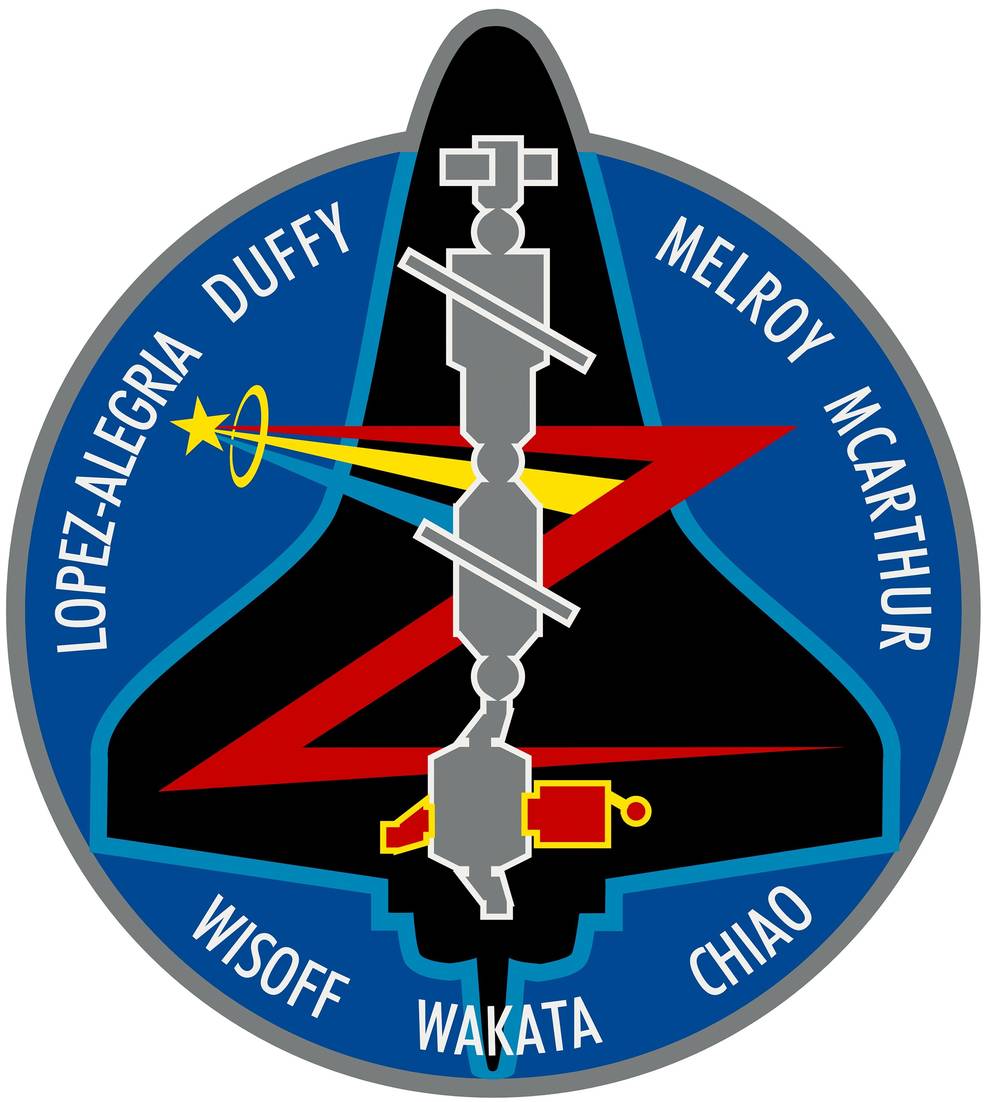
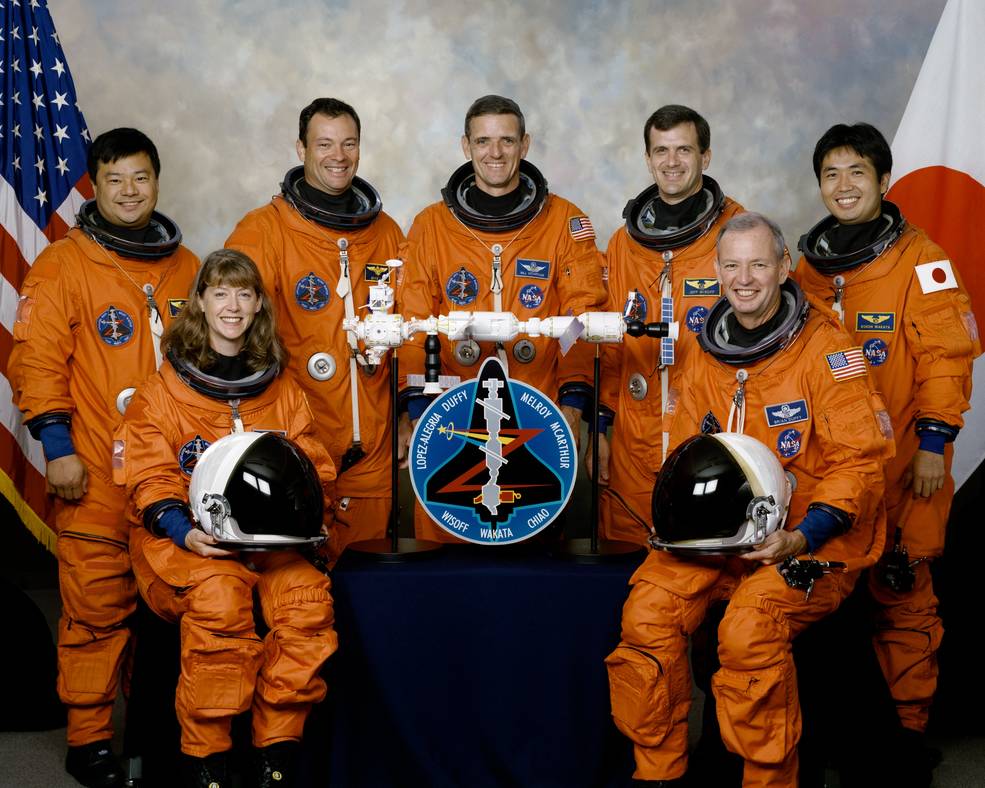
Left: STS-92 crew patch. Right: STS-92 crew members Leroy Chiao, left,
Pamela A. Melroy, Michael E. Lopez-Alegria, William S. McArthur,
Peter J. “Jeff” Wisoff, Brian Duffy, and Koichi Wakata.
After several days of weather delays, the fifth space shuttle assembly and resupply mission to the orbital facility took off on the evening of Oct. 11, 2000. Riding aboard the 100th space shuttle mission were the seven crew members of STS-92, Commander Brian Duffy, Pilot Pamela A. Melroy, and Mission Specialists Leroy Chiao, Williams S. McArthur, Peter J. “Jeff” Wisoff, Michael E. Lopez-Alegria, and Koichi Wakata. Less than two days after launch, Duffy guided Discovery to a smooth docking with the three-module space station at the Pressurized Mating Adapter-2, or PMA-2, located on the forward port of the Node 1 module, also known as Unity.
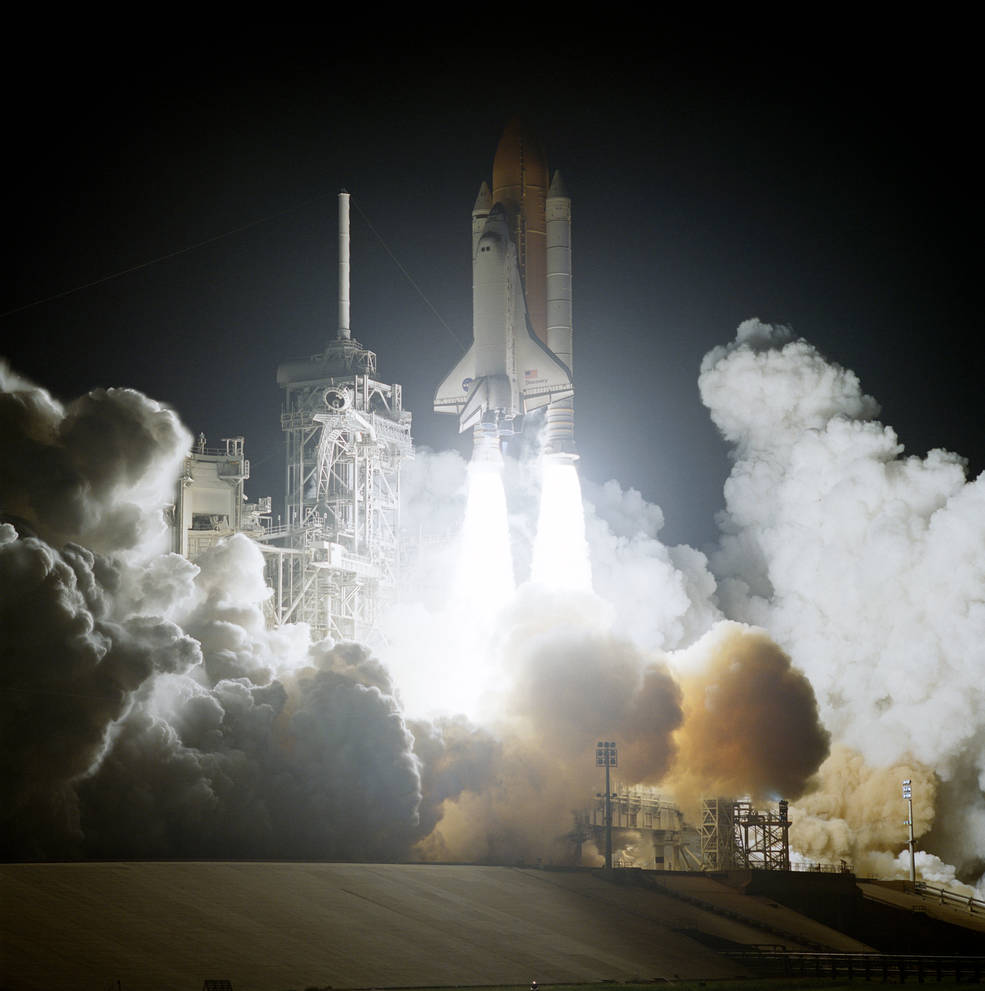
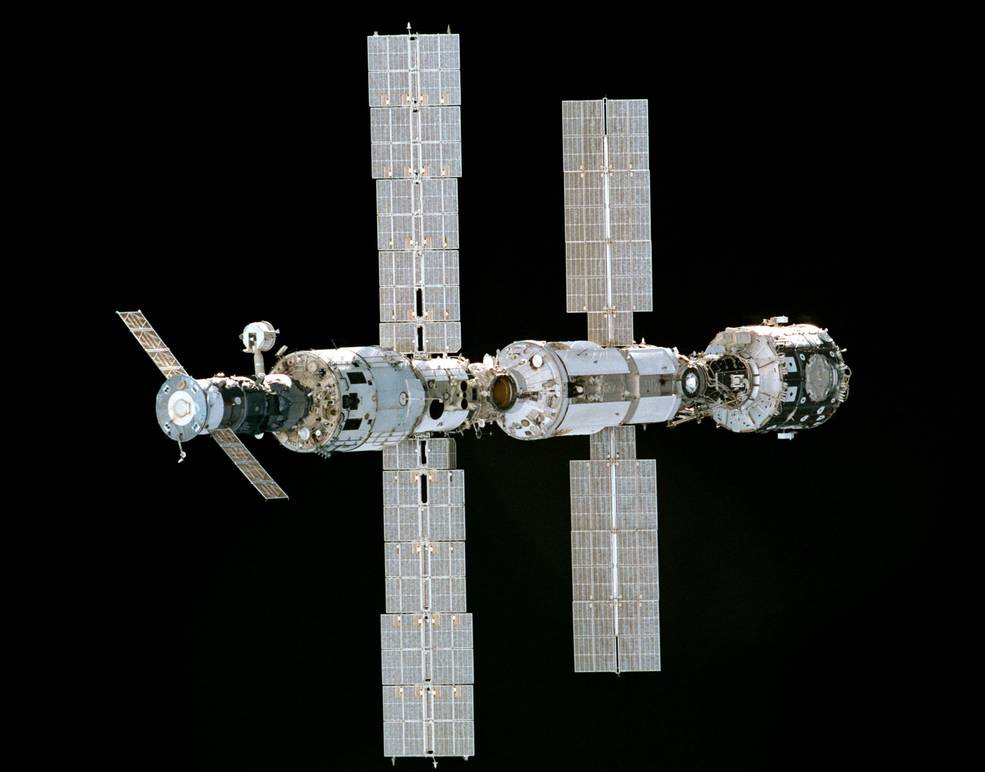
Left: Launch of Discovery on shuttle mission STS-92. Right: View of the three-module
International Space Station from Discovery during the rendezvous and docking maneuver.
The day after docking, Wakata grappled the Z1 truss in the shuttle’s payload bay using the Remote Manipulator System (RMS) and transferred it to Unity’s zenith port. In addition to providing a framework for temporarily attaching the station’s first integrated truss assembly and the first set of solar arrays during the next shuttle flight, the Z1 truss also contained four Control Moment Gyros (CMGs) used to control the station’s attitude without the use of thrusters. Also located on the Z1 truss was the Space to Ground Antenna (SGANT), used for communications between the orbital outpost and Mission Control via the Tracking and Data Relay Satellite System. After the Z1 truss installation, the crew temporarily opened the hatches to the station and entered the Unity module, transferring some items to the station and verifying the integrity of the Z1 truss berthing.
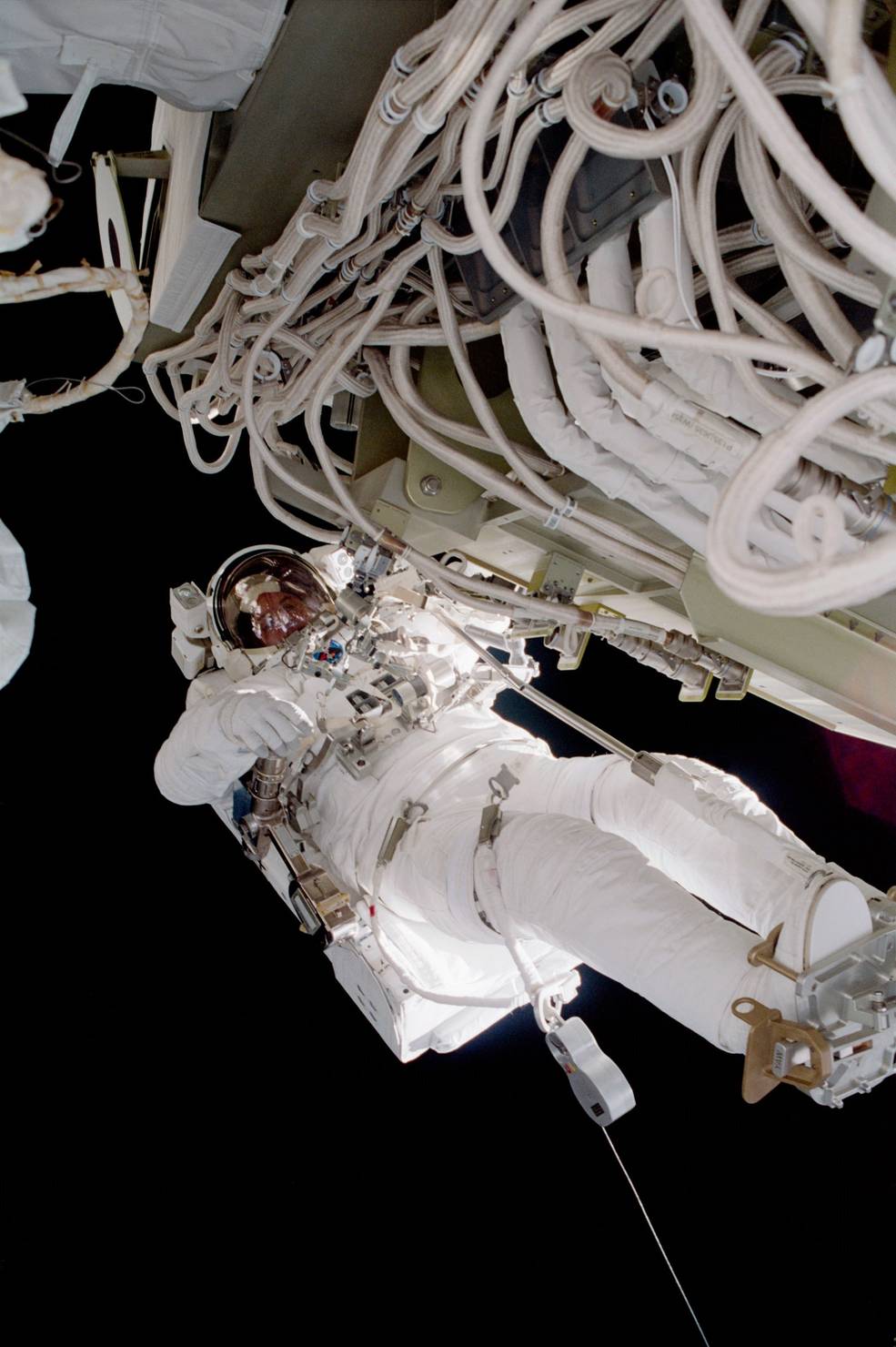
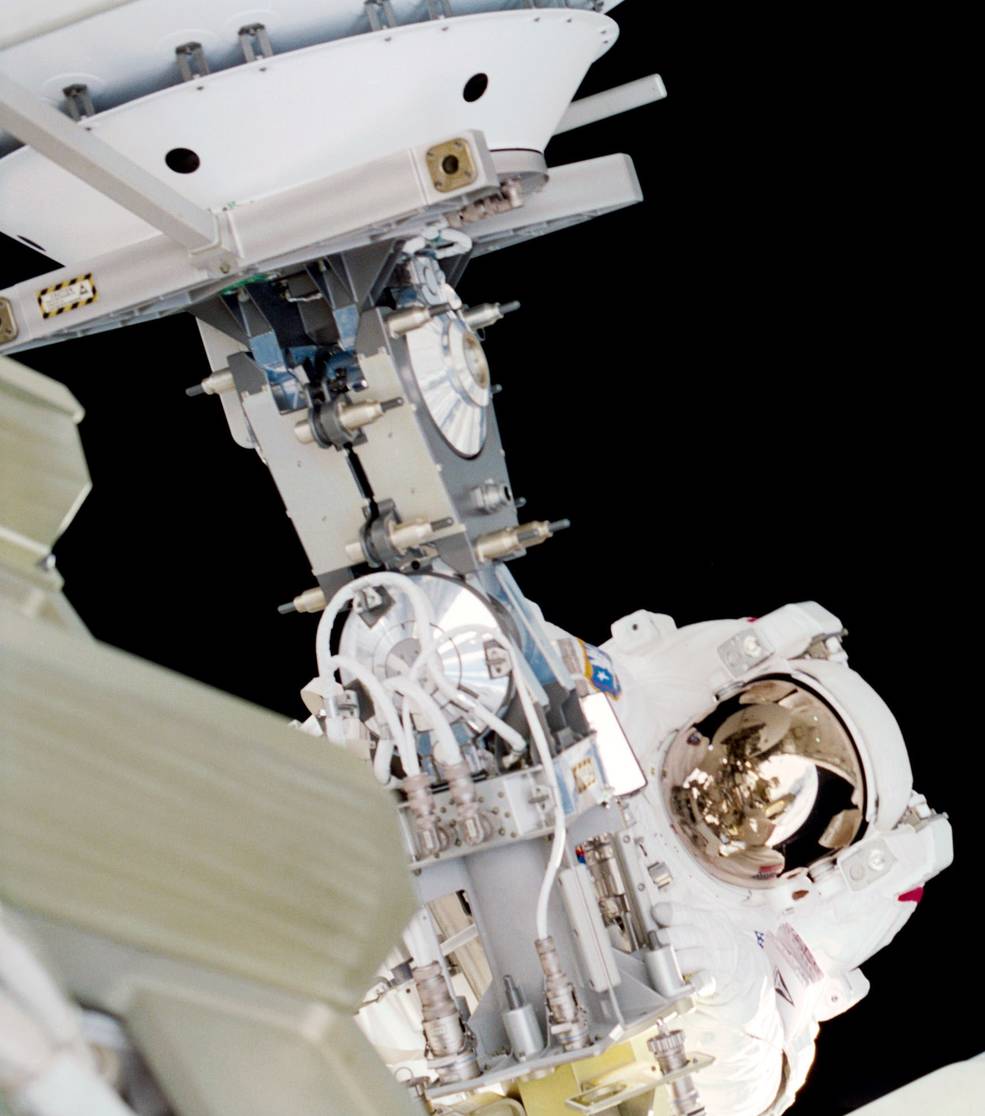
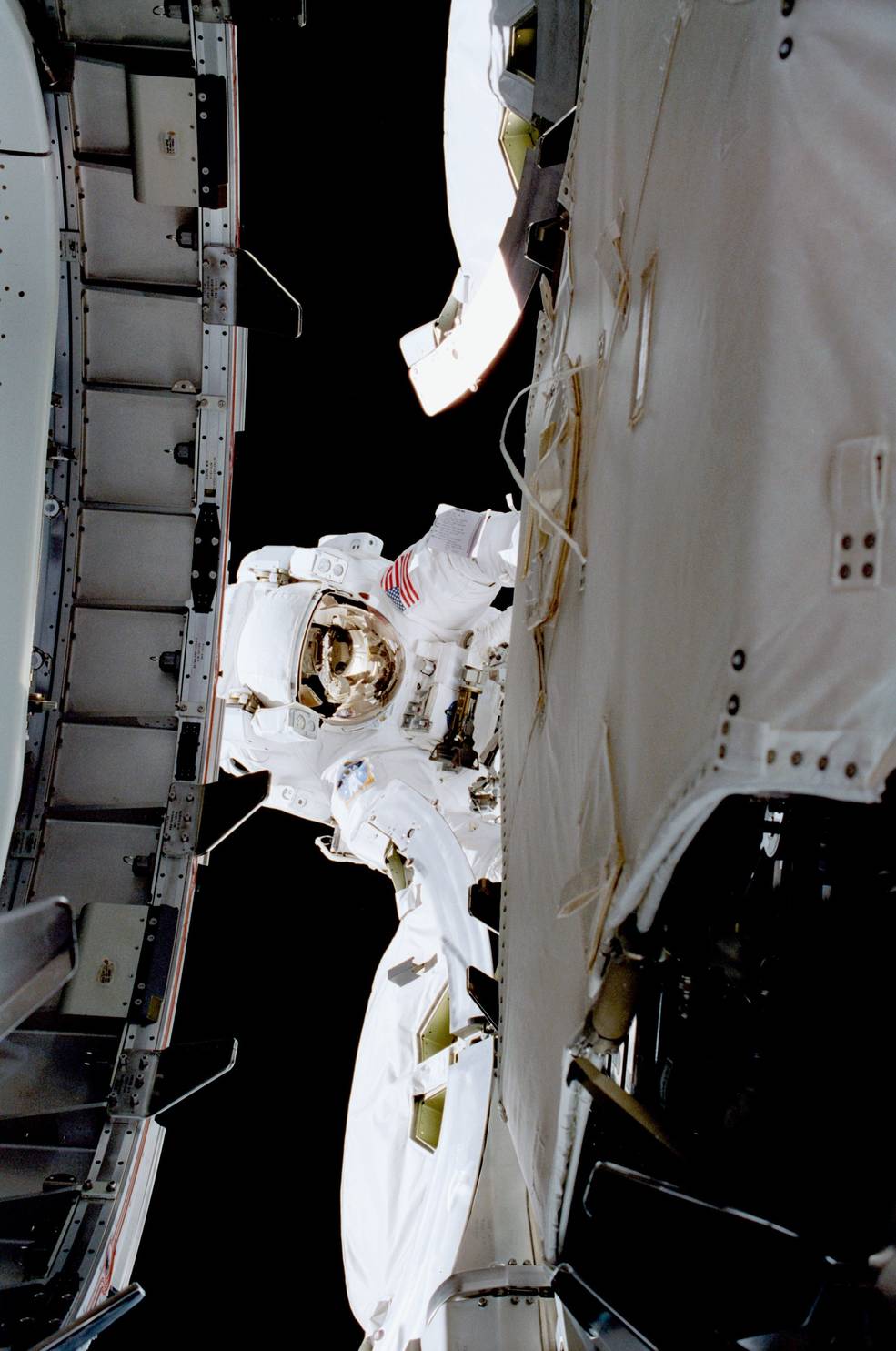
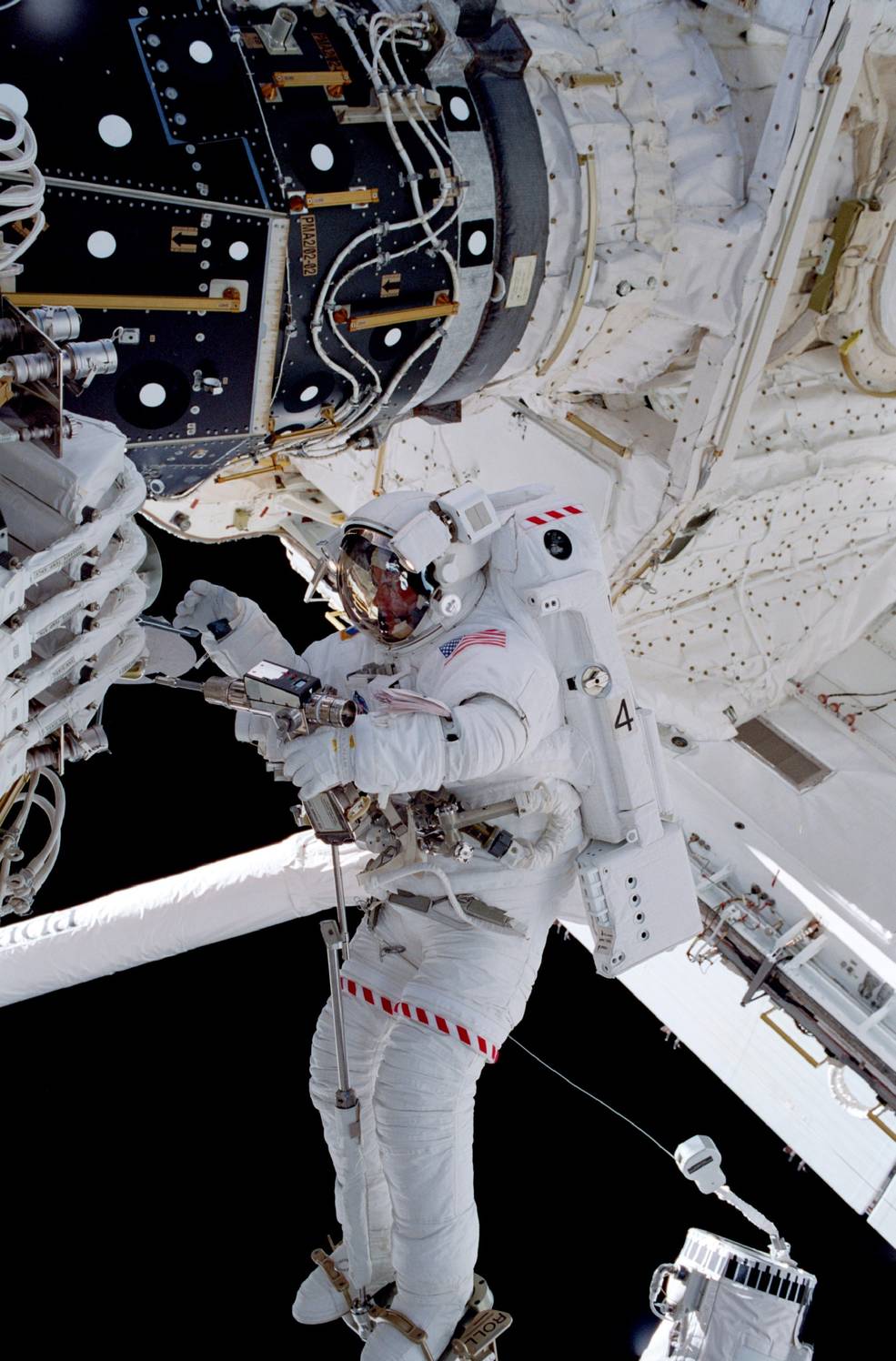
Left: William S. McArthur connecting cables between the Z1 truss and the Node 1 module, also known as Unity, during the first extravehicular activity (EVA). Middle left: Leroy Chiao working on the Space to Ground Antenna boom during the first EVA. Middle right: Peter J. “Jeff” Wisoff monitoring the berthing of the Pressurized Mating Adapter-3 to Unity during the second EVA. Right: Michael E. Lopez-Alegria installing a cable tray on the Z1 truss during the fourth EVA.
Over the next four days, two pairs of astronauts completed four extravehicular activities (EVAs). On Oct. 15, Chiao and McArthur conducted the first EVA, lasting 6 hours and 28 minutes, to complete the Z1 truss installation tasks. These included connecting umbilicals between the Z1 truss and Unity, installing the antenna onto the SGANT boom and then installing and deploying the SGANT in its operational location on the Z1 truss. The next day, Wisoff and Lopez-Alegria spent 7 hours and 7 minutes outside during the second EVA, their primary task to assist in the installation of PMA-3 onto Unity’s nadir facing port. They unbolted it from its carrier in the shuttle’s payload bay and Wakata used the RMS to transfer PMA-3 to Unity where Wisoff and Lopez-Alegria connected umbilicals. During the third EVA on Oct. 17, McArthur and Chiao continued the outfitting of the Z1 truss, spending 6 hours and 48 minutes outside finishing the connection of cables. Lopez-Alegria and Wisoff completed the fourth and final EVA of the mission on Oct. 18. During that 6-hour and 56-minute excursion, they cleared off the zenith surface of the Z1 truss to prepare it for the attachment of the P6 truss and solar arrays on the next mission and installed a cable tray to provide power to the U.S. Laboratory module, arriving on a shuttle flight in early 2001. They also conducted tests of the Shuttle Aid for EVA Rescue (SAFER), gas-propelled backpacks to be used by astronauts to return to the ISS structure should they become untethered. In total, the four astronauts spent 21 hours and 19 minutes working outside the spacecraft.
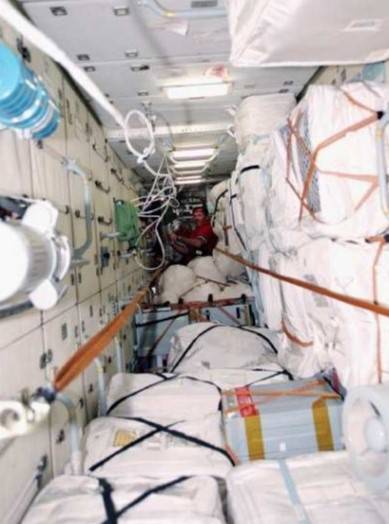
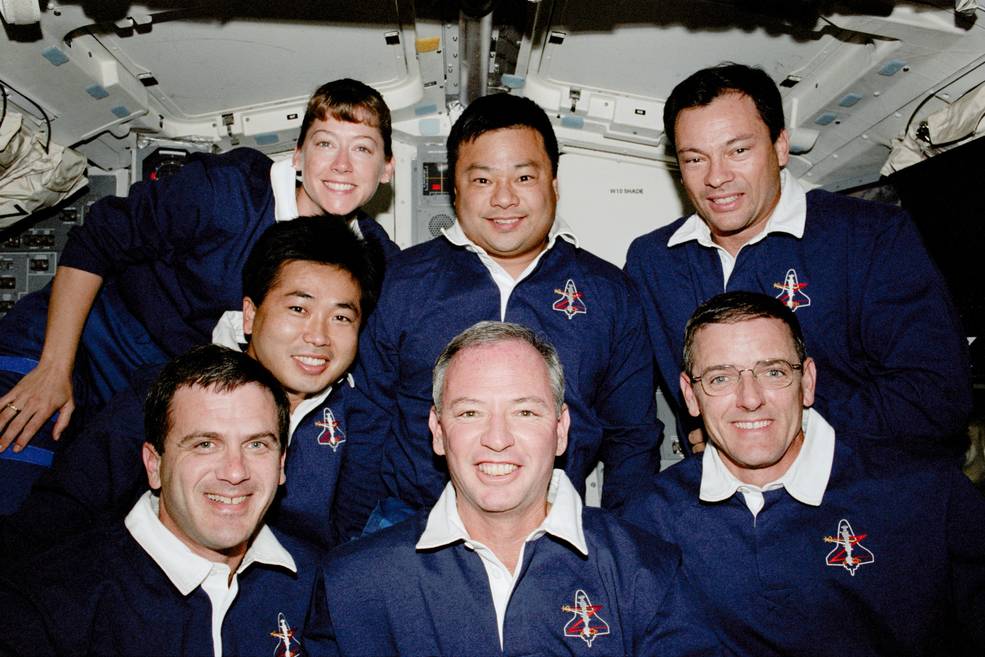
Left: View inside the Zarya module during STS-92, showing the large amount of stowed equipment. Right: Their work finished, the STS-92 crew pose on the shuttle flight deck – clockwise from upper left, Pamela A. Melroy, Leroy Chiao, Michael E. Lopez-Alegria, William S. McArthur, Brian Duffy, Peter J. “Jeff” Wisoff, and Koichi Wakata.
On Oct. 19, the day after the final EVA, the crew opened the hatches to the station once again and entered the Zarya module. They transferred and stowed some items, prepositioned for the first expedition crew, and retrieved the Protein Crystal Growth-Enhanced Nitrogen Dewar (PCG-EGN) Dewar experiment that the STS-106 crew had placed aboard Zarya in September. The STS-92 crew returned the PCG-EGN Dewar to Earth for scientists to examine the crystals grown during the 46 days the experiment spent in space, the first experiment results returned from the orbiting laboratory. The crew then closed the hatch for the final time on an uninhabited space station.
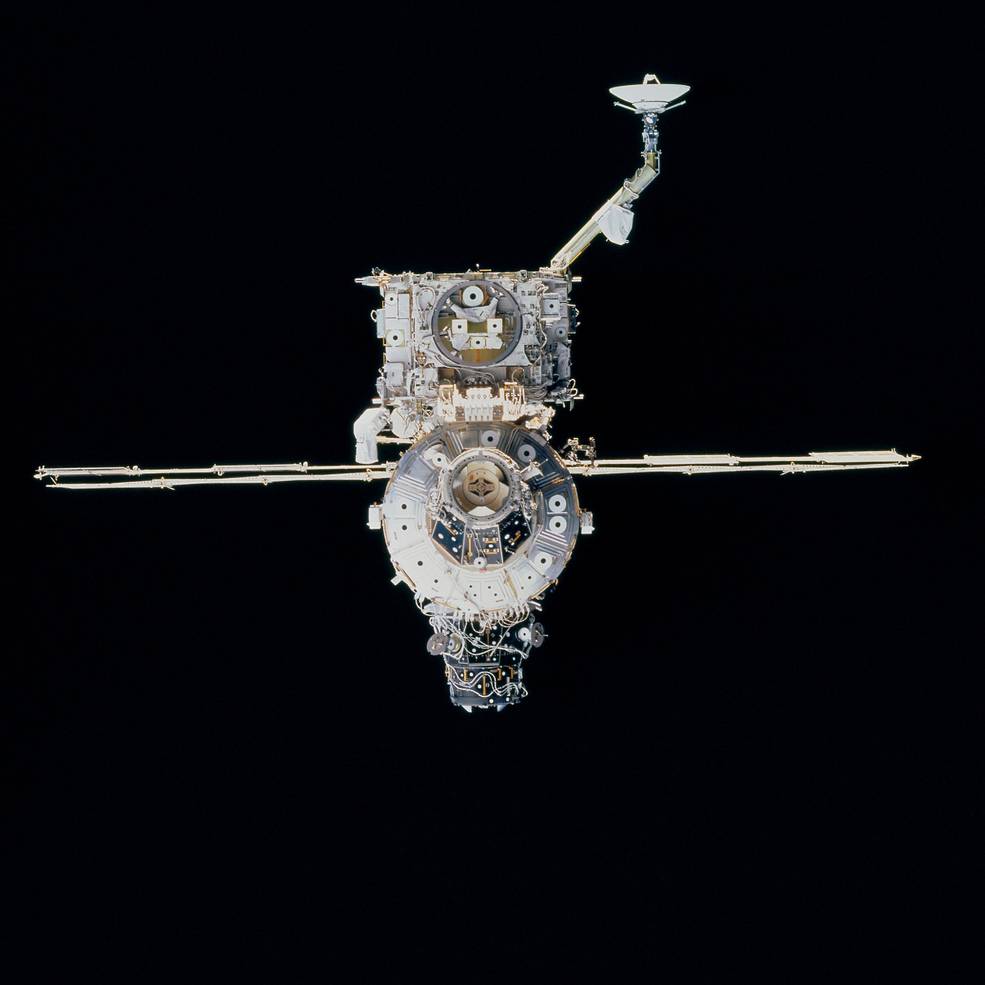
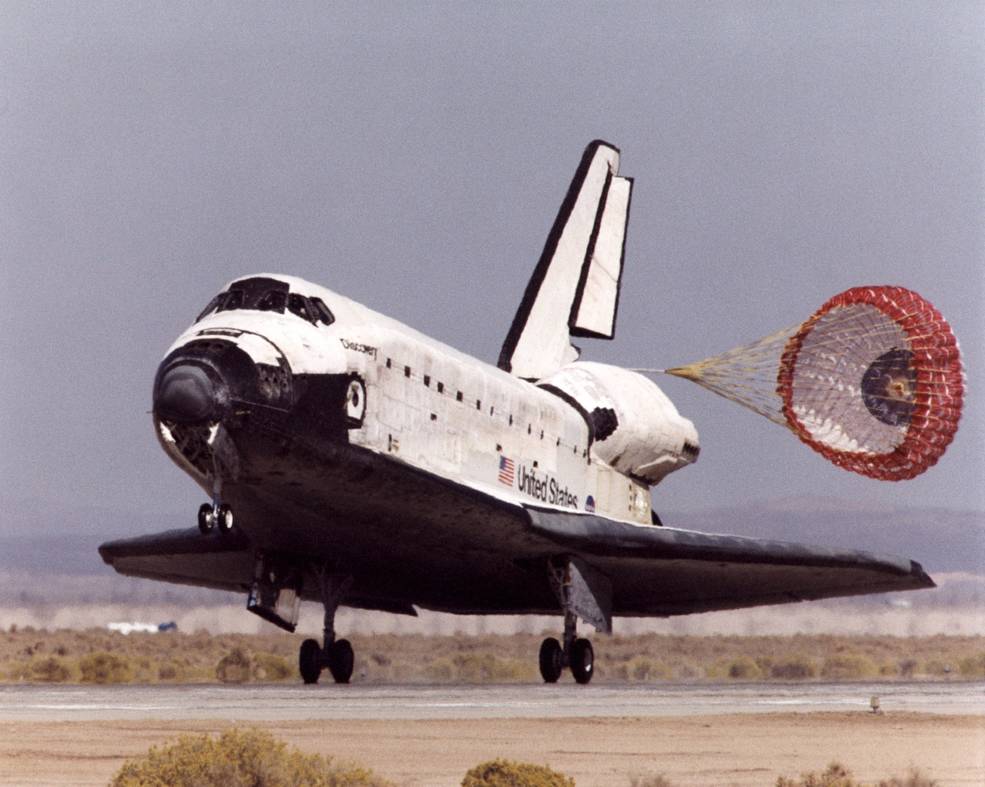
Left: A view of the International Space Station as seen from Discovery during its departure, with the newly added Z1 truss visible at the top and the Pressurized Mating Adapter-3 at the bottom. Right: Discovery makes a smooth landing at Edwards Air Force Base in California.
With Melroy at the controls, Discovery undocked from the ISS on Oct. 20 and completed a fly around of the expanded station, with the crew taking photographs to document its condition. Inclement weather at the landing facilities at NASA’s Kennedy Space Center and at Edwards Air Force Base (AFB) in California kept Discovery and its crew in orbit for two extra days. On Oct. 24, the astronauts closed Discovery’s payload bay doors, put on their launch and entry suits, strapped into their seats, and fired the shuttle’s engines for the trip back to Earth. Duffy guided Discovery to a smooth landing at Edwards AFB, ending a highly successful 13-day mission to prepare the orbital outpost for its first occupants.
Enjoy the crew-narrated video about the STS-92 mission.











